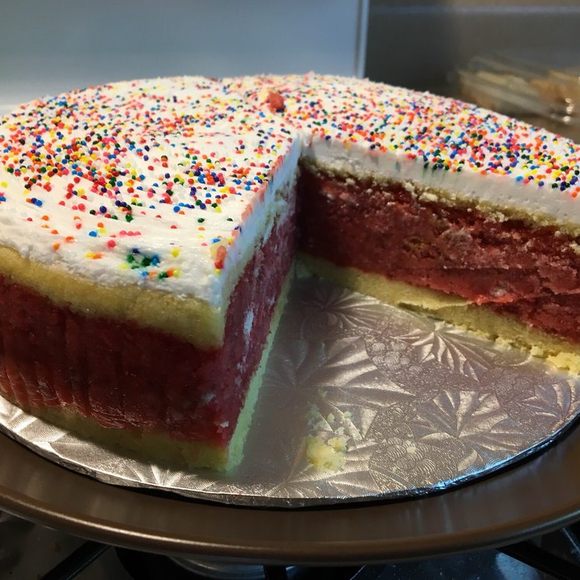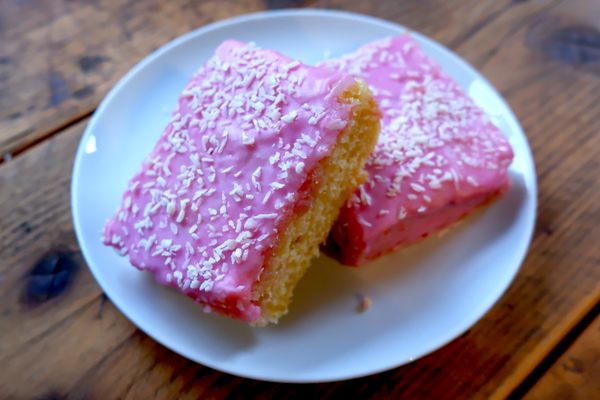Russian cake, also known as Creole trifle, has been a Louisiana tradition since the 19th century. But few bakeries today sell this “cake,” which is made by taking assorted bakery confection scraps and pressing them together into a cake tin. Liberal splashes of rum moisten the cake, and jelly or other infused syrups are used as binding agents. It is assembled in special molds with separate bottoms, and bags of flour or sugar are typically placed on top of the covered cake to press it solidly into the mold.
Theories abound as to the origins of Russian cake. The popular legend goes that it was created by a New Orleans baker who ran out of ingredients to bake a proper cake for the Russian Grand Duke Alexis when the latter visited New Orleans for Mardi Gras in 1872. But the late food historian Michael Mizell-Nelson put this theory to rest, writing that there was no documentation to confirm this story. Mizell-Nelson offered instead that Russian cake may have been an offshoot of the raspberry trifle, or even the Austrian/German punschtorte. The latter features a “punch” of cake and biscuit scraps mixed with rum, cocoa, and jam that gets sandwiched between layers of sponge cake. Another inspiration for the Louisiana Russian Cake may have been the Charlotte à la Russe, a popular dessert in the 18th and 19th centuries, in which a cake mold was lined with stale bread or cake then filled with cream or trifle and set with a layer of gelatin. À la Russe, of course, means “in the Russian style.”
Today’s Russian cake is rich and moist, and bakers advise moderation in its enjoyment. It is soaked in rum, padded with jam, and covered in a dense layer of icing topped with sprinkles, making for quite the sugar bomb. Sometimes anise extract is used to enhance flavor. While this is decadent, it pales in comparison to some versions: A recipe for a giant Russian cake, found in the archives of The Times-Picayune from the 1980s, and submitted by a reader from Lafayette, called for 15 pounds of cake leftovers and serious carpentry skills. A mold made of a customized bottomless wooden frame that was 14 inches long, 10 inches wide, and seven inches deep would first need to be made. The cake scraps, along with two glassfuls of jelly, four and a half cups of sugar, a bit of rum, and two boxes of white cake mix, yielded a 21-pound Russian cake. Sometimes (only sometimes), there really can be too much of a sweet thing.
Where to Try It
-
Haydel's Bakery
4037 Jefferson Hwy, New Orleans, Louisiana, 70121, United StatesYou can order Russian cake by the slice or in its entirety (for $63) at this New Orleans shop that's also famous for its king cake.
-
Baum's Fine Pastries Website
10550 Perkins Rd, Baton Rouge, Louisiana, 70810, United StatesBaum's Russian rum cake is wonderful.
Written By
 Rohini Chaki
Rohini Chaki














